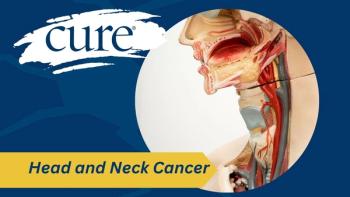
Film offers powerful images of John Kaplan's lymphoma journey
In 1992, photojournalist John Kaplan won the Pulitzer Prize for his gritty, sobering portrayal of American 21-year-olds, including Phil Anselmo, the lead singer for the heavy metal band Pantera. Kaplan, then 32, might have considered the achievement a highlight of his career, surpassing his memorable photo session with Mother Teresa. Yet 16 years later, with a young family and a Fulbright Scholarship, Kaplan received a life-altering "blindside," a diagnosis of Non-Hodgkin lymphoma.Kaplan weaves together these disparate elements of his life in his new documentary, Not as I Pictured, a deeply personal, emotionally wrenching look at his journey through cancer treatment and beyond.Cliché it isn't so
From the outset, Kaplan makes clear his intention to avoid the kind of self-indulgent "my battle with cancer" stories written by journalists who have the disease. In fact, it was precisely because of his aversion to such clichés that he didn't even consider picking up his camera until after surgery. Looking at his incisions and strange hair patterns in the bathroom mirror, he snapped a picture on a whim. It would be the first of many such self-portraits, both still shots and videos, carefully executed with wide angle lenses and remote controls.Supportive cast
Kaplan's journey is filled with solitary, soul-searching moments, yet he is rarely alone. Viewers are introduced to his wife, Li, and his children, Carina and Max--who clearly provide the necessary motivation to face his fears with courage and grace. Kaplan's mother is also there, in a series of still shots, as she sees him for the first time after he's lost his hair to chemotherapy. And then there are Kaplan's students.As a professor of photography, design and international journalism at the University of Florida, Kaplan is inspired by his students to look beyond the limitations of his treatment. Sending them off to Costa Rica for fieldwork, he seems more like a doting dad than a cancer victim.Spoiler alert!
The highlight of the 54-minute documentary is the story of Ryan Koehn, a Detroit firefighter who underwent surgery for brain cancer at age 28. During his treatment, Koehn found inspiration in Kaplan's photo of Phil Anselmo, because it showed Anselmo's tattoo of the word "strength" on the side of his head--the same area as Koehn's surgery scar. Koehn's brother Todd contacted Kaplan, told him the story, and asked for a better quality copy of the image. Kaplan flew to Detroit, had the image framed, and delivered it to Koehn with the help of Anselmo himself. You might call it a picture-perfect ending to the story.But the real photo finish is the film's last impression: of Li Kaplan, jubilant at the news of her husband's complete remission, and of John Kaplan, in stunned disbelief upon hearing the same.The film has already received a couple dozen honors at film festivals and is slated for broadcast on PBS in September, but Kaplan wants to get its hopeful message directly to anyone affected by cancer. His efforts have been supported by the American Society of Clinical Oncology (ASCO), which created a 16-page film companion guide addressing the emotional side of cancer with coping and lifestyle tips for patients and caregivers. If you would like to view the film trailer, order a free copy for personal use or inquire about Kaplan's availability to speak in your community, visit the





